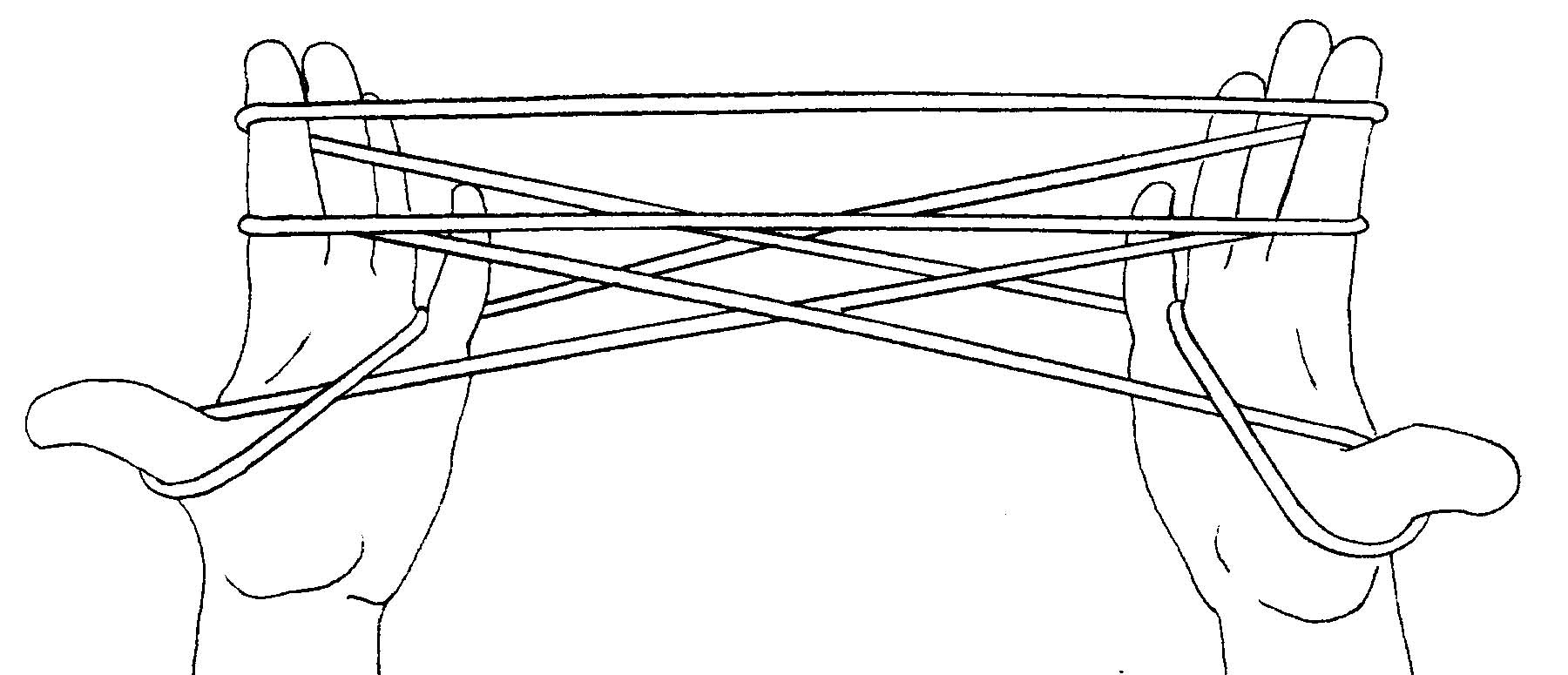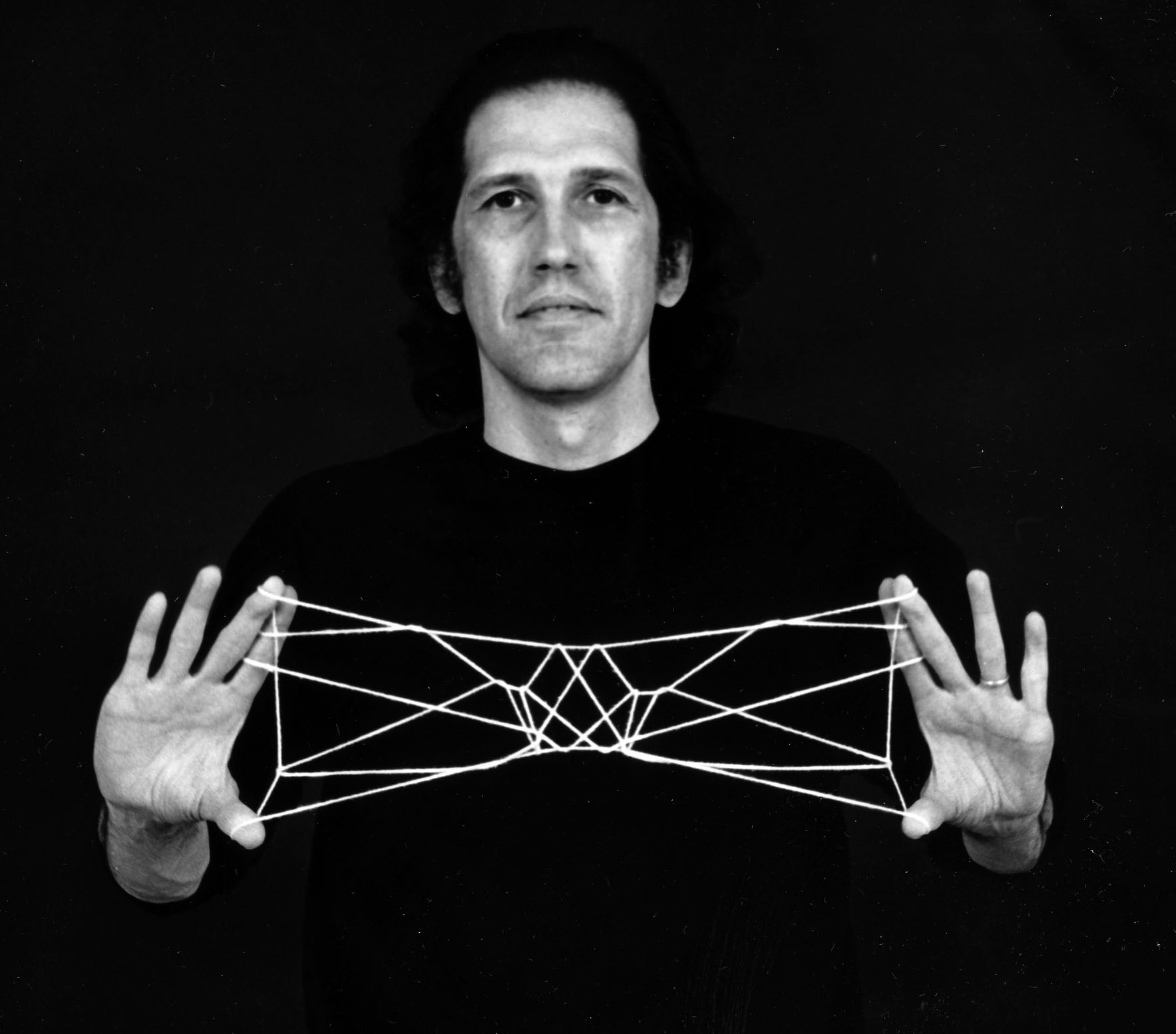altering the weaving phase
CREATING SIMPLE VARIATIONS OF TEN MEN
Once my students have mastered the parent figure, i teach them how to alter the weaving phase using a variety of techniques.
These techniques include altering the string retrieved by the thumbs, altering how this string is retrieved, and altering the path taken by the thumbs prior to retrieving the desired string.
Also, i introduce the concept of repeating the weaving phase more than twice.
Suppose you forgot which little finger string to pick up with your thumbs when beginning your first weave and picked up the far little finger string instead of the near little finger string. Remarkably, a different figure results (i.e., the design does not collapse). Retrieving the far little finger string during the second weave (or during the first and second weaves) also gives rise to new designs. Perhaps we should pause and consider how to organize our search for different patterns as our creative play progresses:
Consider the following three simple weaves (here i use a single lowercase bold letter as shorthand notation for indicating which string is retrieved by the thumb during each weaving phase and how it is retrieved):
a (pick up the near little finger string as in ten men)
b (pick up the far little finger string under the near little finger string)
c (pick up the far little finger string over the near little finger string)
Now consider how many different two-weave patterns you can make. Using my shorthand notation, the original ten ten figure would be written as aa. Another figure would be ab, with a third being ac. Now consider weaving b first or c first.
You can see it gets complicated to store the results in your head. In class i encourage my students to use a simple matrix to explore these possibilities. The result of each combination can be sketched within the squares of a matrix:
Now comes a new imaginative difference which leads to a real mystery. Suppose you didn’t pick up the near little finger string with the thumb in the regular way but instead “downflipped” it by placing your thumb on top of the near little finger string and curling your thumb down and toward you as you returned (fig. 5). The resulting thumb loops now have a half twist in them (fig. 6). This weave i call a' (a-prime). That is because it is the reciprocal or inverse of the a weave.
There is also a method of flipping the string which is not as natural, but which must be thought of in order to round out the possible differences in our weaving patterns. In the inverse weaves described above, we artificially formed the “downflip” of the c weave by rotating the new thumb loop half a turn away and then resetting it. The anti-inverse would be formed by rotating the new loop half a turn towards you. Finishing the weave would then result in a running half-hitch in the figure. And obviously all the weaves described so far will have an inverse and an anti-inverse (a prime and a double prime in my notational system). However, i haven’t found any real use for anti-inverse weaves except for introducing a half-hitch into the design.

things to consider
it should be emphasized that there are 3 squared or 9 two weave patterns possible with these three weaves, 3 cubed or 27 possible three weave patterns, 3 to the fourth power or 81 possible four weave patterns, etc. try some of them.
then, of course, if you consider the inverse weaves a', b', and c' you have six basic weaves and 6 squared or 36 two weave patterns, and 6 cubed or 216 three weave patterns (but you must be careful here and subtrract the 36 patterns which will simplify because of the inverse relationship, e. g. a a' b results in a simple b weave). this will become clear when you begin to explore the 180 three weave patterns which are possible with these six weaves.
